Upon leaving Nevada, we admitted that we were desperate for greenery. The desert is beautiful but we come from green places, and the lack of lush foliage was starting to wear. We would find green in California, but we first turned in the direction of Mojave National Preserve, which was a far rather different desert than we had expected. Rather than flat and endless, the drive was rather bouncy as we passed the many signs announcing: “DIP”. The temperature was cooler, as well, rendering the Mojave surprisingly comfortable for the ten minutes we stepped out of the car to look closer at the plants.
It’s a little strange to write and post this now because the area we drove through is currently on fire. The theme of fire, of which we had seen traces throughout our travels, only grew as we entered California; my concern for the planet, as I now experience a very wet summer with crops rotting in fields, has grown in parallel.
Our drive also included elements of desert travel along Route 66 that we had come to know, elements of the uncanny punctuating the stark landscape.

That evening, we arrived in Joshua Tree National Park and went for several walks as the sun began to set. We caught the last of the day’s light on fuzzy-looking cacti that I wanted to touch (but refrained) . . .
. . . and walked a trail amidst clusters of the pillow-shaped boulders that have far more texture than we originally thought. It’s no wonder there’s so much bouldering and climbing here, and we played around a little in our hiking boots. There were more species of cacti, again making for a different desert than we’d seen previously.

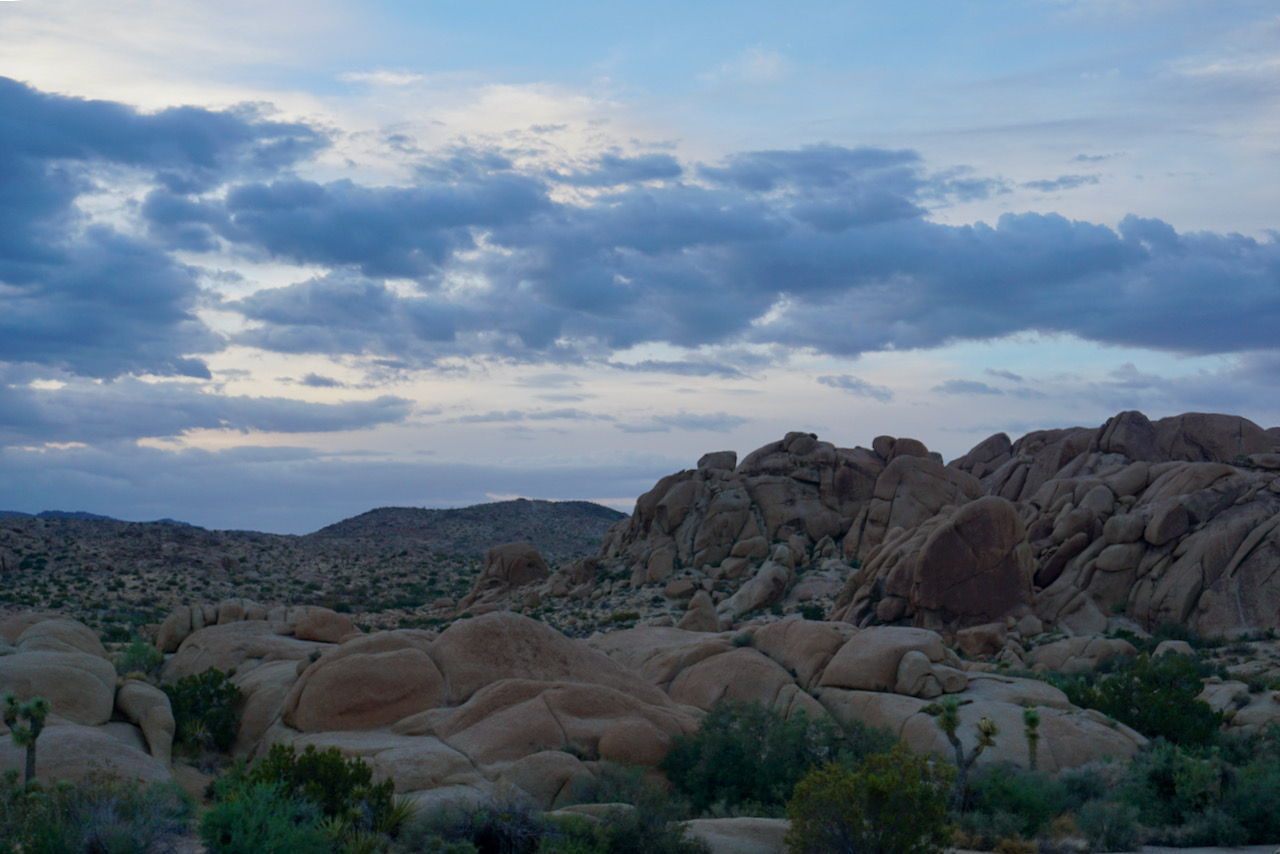
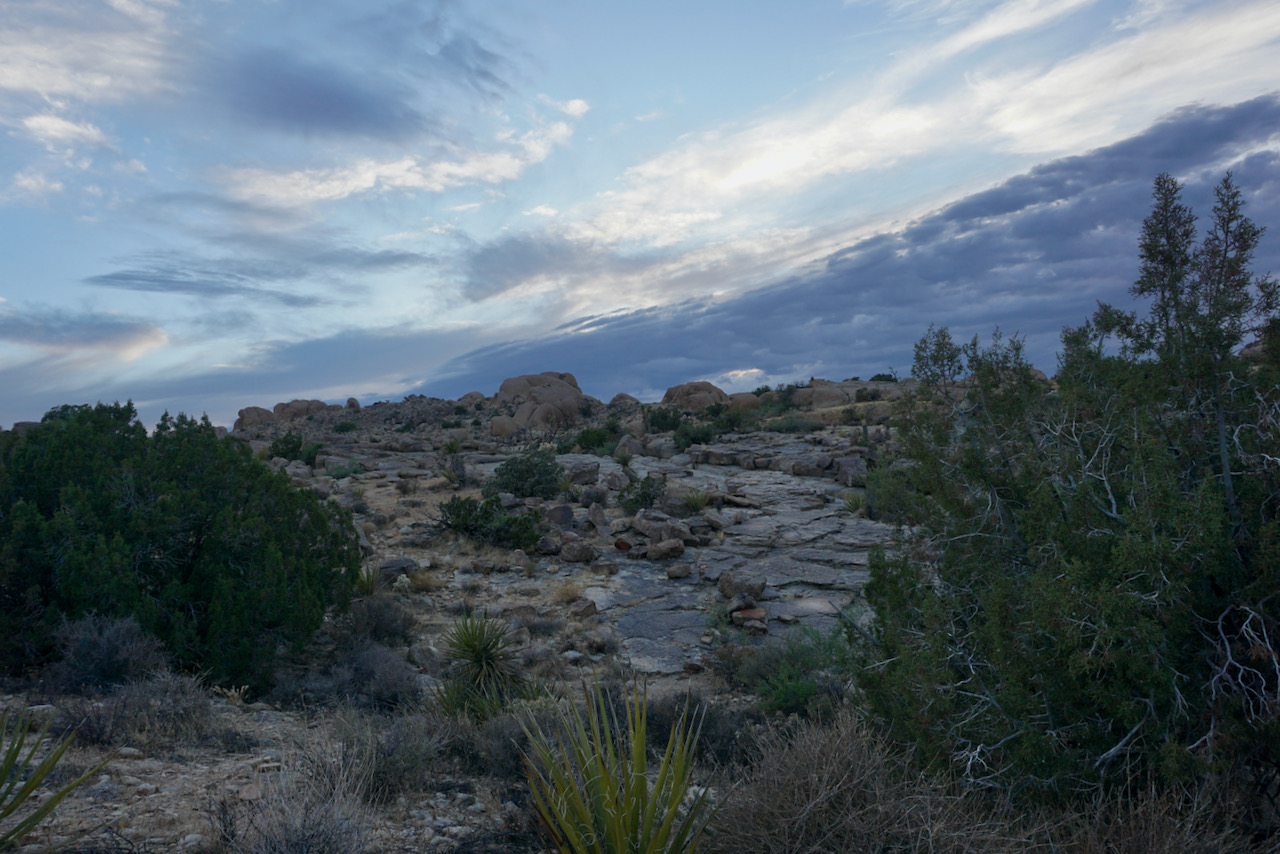


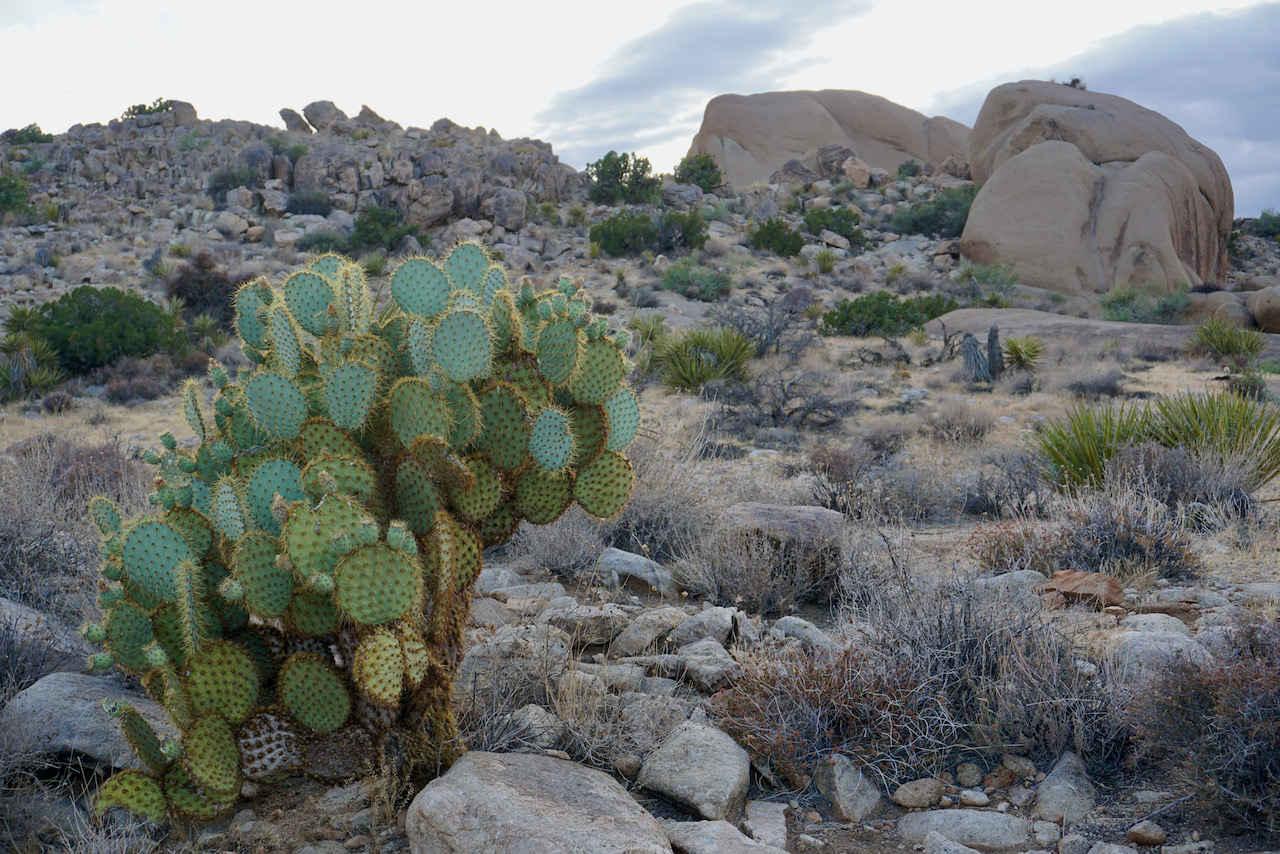

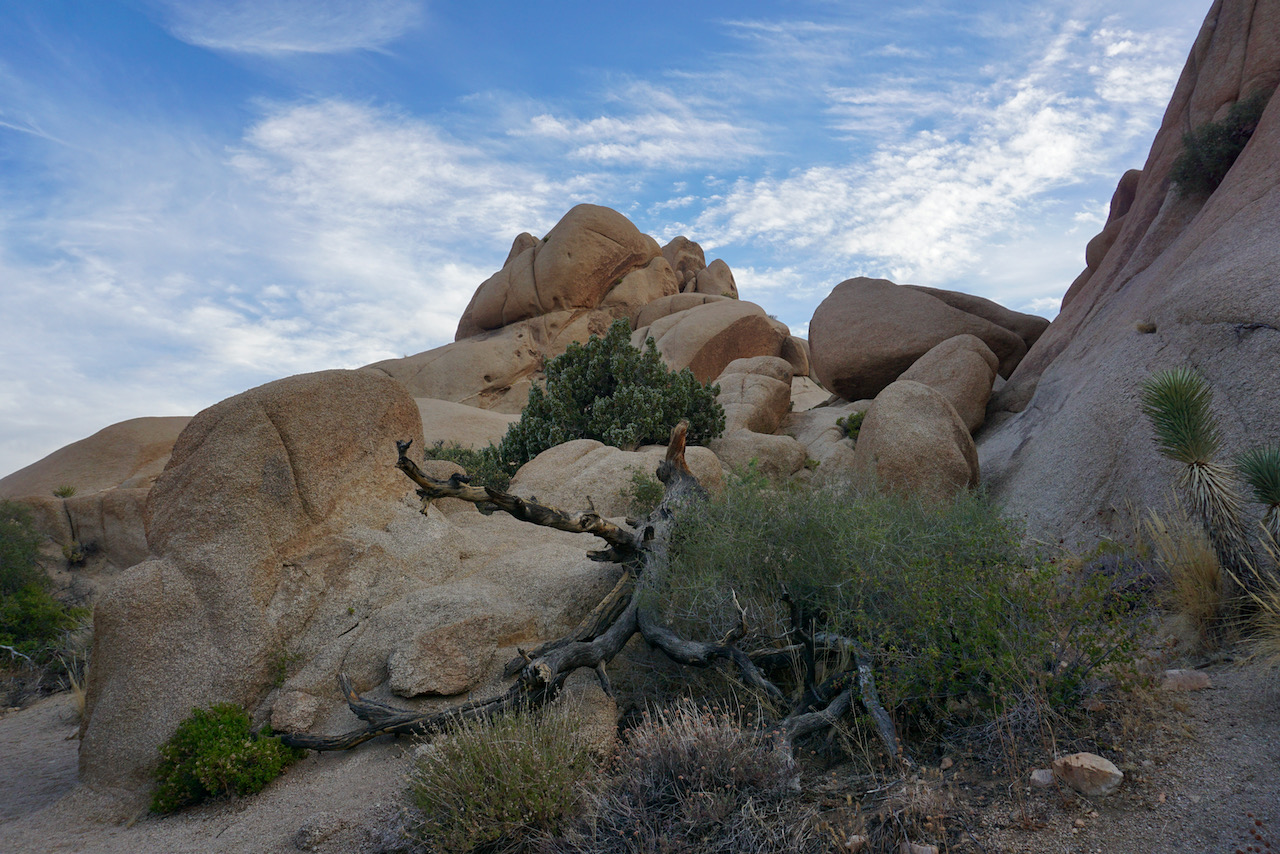



This is also where we finally saw Joshua trees. We had seen them for the first time on the way to the Grand Canyon, but not yet in their eponymous park.
We crossed the road to scramble up the boulders just behind Skull Rock, and then it was truly dusk and time to go.
We returned to the park after staying the night in Twentynine Palms, California. The temperature was relatively comfortable but the sun was intense, dictating short walks rather than longer hikes. We had learned to listen to the desert, and we headed off the in direction of a high viewpoint to look around.
As before, we were really taken by the boulders and found chalk marks mapping out routes. They felt good, those rocks.
The afternoon was spent driving through real desert, yellow and scrubby, becoming hilly and mountainous as we drove further north. By the time we reached Porterville, California to stop for the night, the landscape alternated between yellow rolling hills of nothing and irrigated orchards and farms that were so green by comparison that they almost didn’t seem real.
The following morning found us on the way to Sequoia National Park, which definitely made us feel better about missing trees and greenery. We drove serpentines up mountains, ending in lush, cool, aromatic forest.
And the sequoias. They are so much larger than what I had imagined, or what I can describe. I could not fit a whole tree into my camera lens, and instead felt myself become nothing beside them. An individual is utterly insignificant in the scale of the world, and the sequoias are a reminder of that. Further amazing, if possible, were the obvious signs of damage and regrowth from fire. A museum exhibit explained the fire protective and regenerative nature of these giants, and it was interesting to see so clearly fire’s role in the life cycle and ecosystem. However, the serpentines leading up to the park were barren in part, entire swaths of forest swallowed, interspersed with tiny, new saplings. Cycle indeed.
I really love reaching the highest point and looking out, and to that end we climbed up to Moro Rock, respecting the 400-step staircase except in one area where the little climb was too lovely to resist.
From there, we continued driving north to Oakhurst, California to spend the night as close to Yosemite National Park as we were willing to afford, putting us almost two hours away. The landscape continued to change on our drive, with deep green trees gradually appearing along the rolling hills covered in yellow grass. The trees grew in numbers until it was clear that we were finally out of the desert. And as much as we had enjoyed it, we were glad.
Let me emphasize here, in case it is not yet clear, that we are rock climbers. We met in the climbing hall and had climbed real rocks together before realizing mutual interest. Therefore, the excitement of Yosemite was in seeing Half Dome . . .
. . . and El Capitan, which did not disappoint. The signs indicating climbing areas where particularly enticing and we followed them to the base of the rock, playing on the first few moves.
We also followed the largest numbers of tourists that we’d seen at any park to see and hear some of Yosemite’s famed waterfalls.
We had grossly underestimated the number of visitors to Yosemite, thinking of it as a Mecca for climbers and not as a sightseeing destination that, in 2016, received 5 million visitors, most of whom visit during the summer, as we did. With the crowds and the poor layout and transportation of the park, it was almost as though nature faded into the background as people vied for the best spot to take photos. We were glad to escape to the foot of El Cap and to follow a longer walking trail through the valley to get back to our car.
Due to good weather and general difficulties getting around in Yosemite, we were on the road rather late on the way to our final destination. We would spend two nights in Oakland, California before flying home. On the way through the park, we again saw evidence of fire damage everywhere. Entire hillsides were populated only with fire-damaged trees and the grasses that have grown back around them. It was hard to look at, and so much greater in scale than I had imagined, despite being generally aware of California’s fire news.
It was summer when we left Yosemite, but we found spring/fall in Oakland and San Francisco. We dug jeans, long sleeves, and windbreakers from the bottoms of our bags and headed out in weather of 14°C (57°F), temperatures we hadn’t experienced in quite a while. This was my second time in San Francisco and I was pleased at how much of the city’s layout I remembered. We did as much as we could in the day that we had, including a windy walk across the Golden Gate Bridge . . .
. . . a stroll along the beach and through a park . . .
. . . a stop at Fisherman’s Wharf to look at the boats, seals, and general activity. . .
. . . a ride on a cable car up very steep San Francisco hills, complete with all the clanging and banging that is straight out of another century . . .
. . . and a visit to the Painted Ladies, which I now know are the Full House houses.

Within that, we also walked through the Embarcadero and the Mission, got a quick peek at the Chinatown Gate from the cable car and the Tenderloin from a bus, and spent a few minutes in Sausalito after deciding to be adventurous and getting off one stop later than planned without checking the bus route. There is a lot to see and do in San Francisco, and a day doesn’t quite cut it.
That being said, we spent much of the day laughing at the combination of people-watching and the weather. It seemed we weren’t the only ones surprised by needing jackets, but we were luckily not among those who resorted to brand-new souvenir shop sweatshirts. As in any big city, there are all kinds of people in San Francisco, tourists aside, and that was refreshing. What I find difficult about San Francisco, however, is the homelessness. The visibility of the problem seems a mere hint at the scale of the problem, and that makes me sad.
After all that we had seen and experienced on our trip, we were ready to fly home and take the time to process, to think over, to reflect on the opportunities we’d had. It’s a wonderful feeling to go away, and sweet indeed to come home.







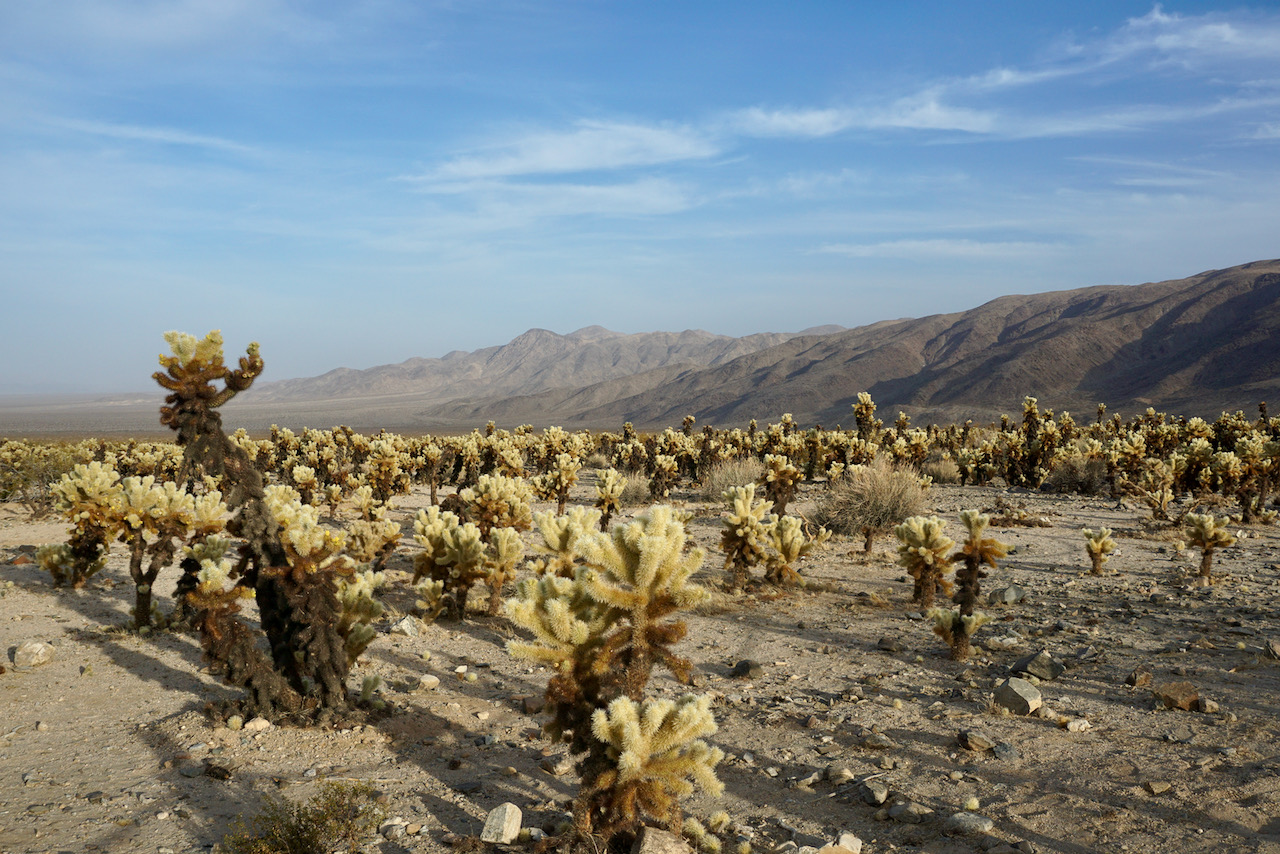










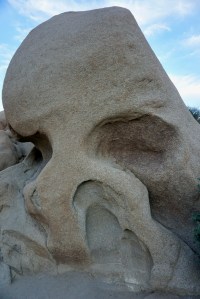





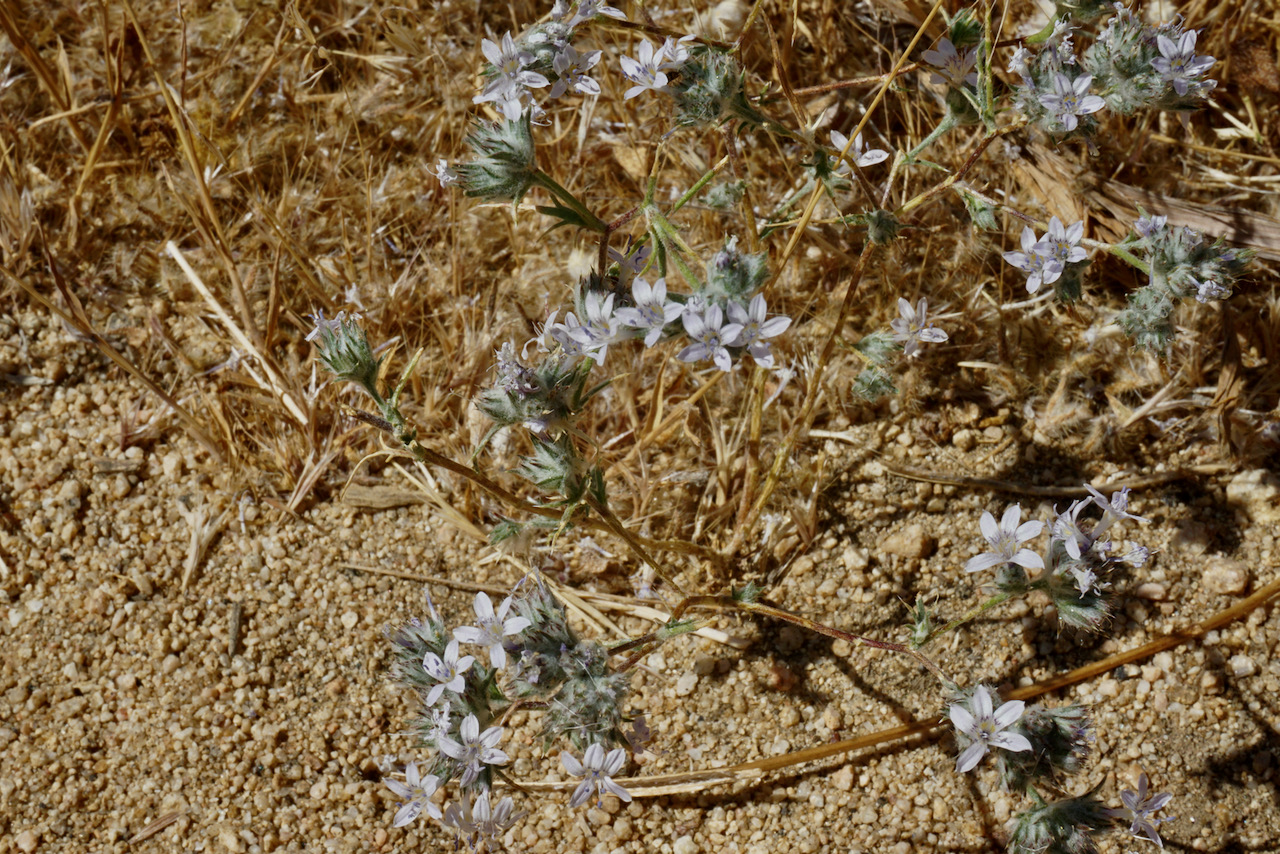








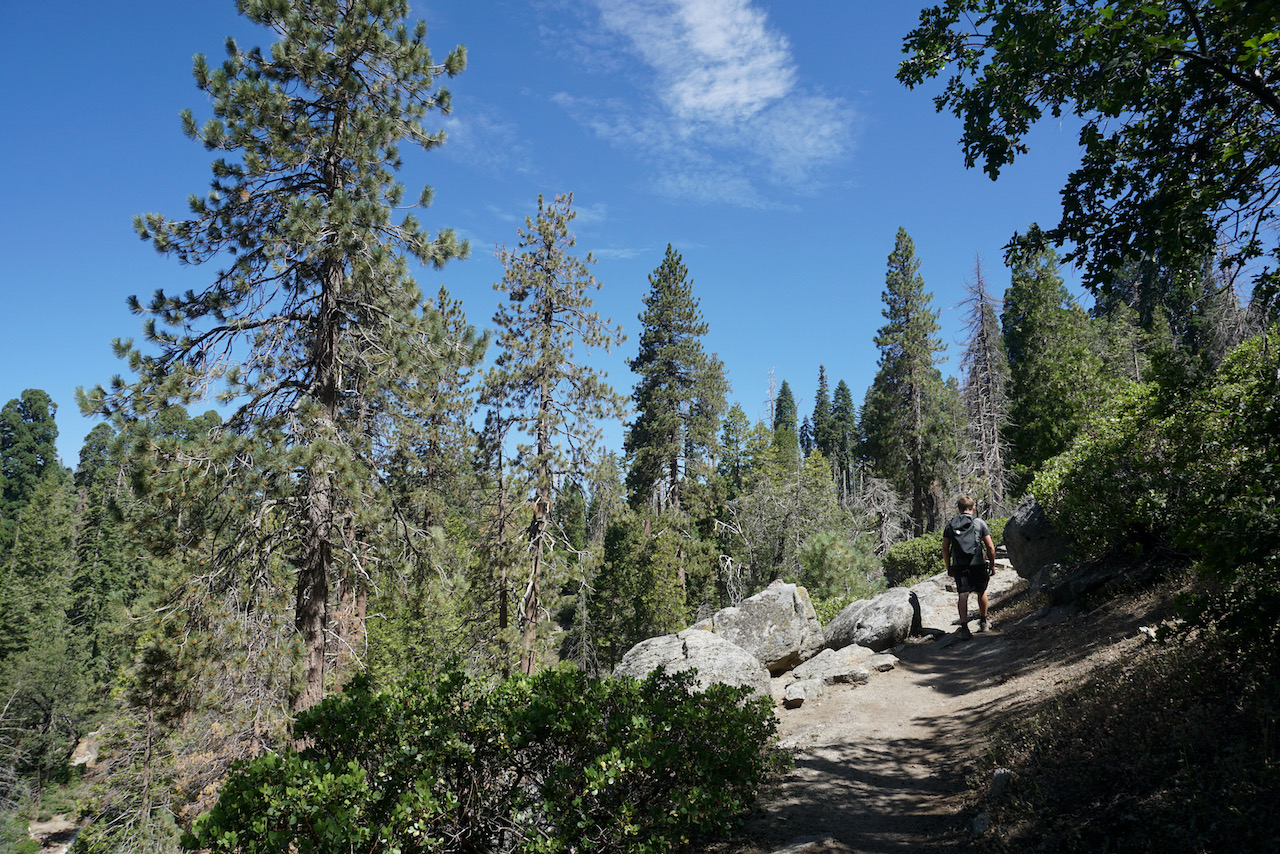
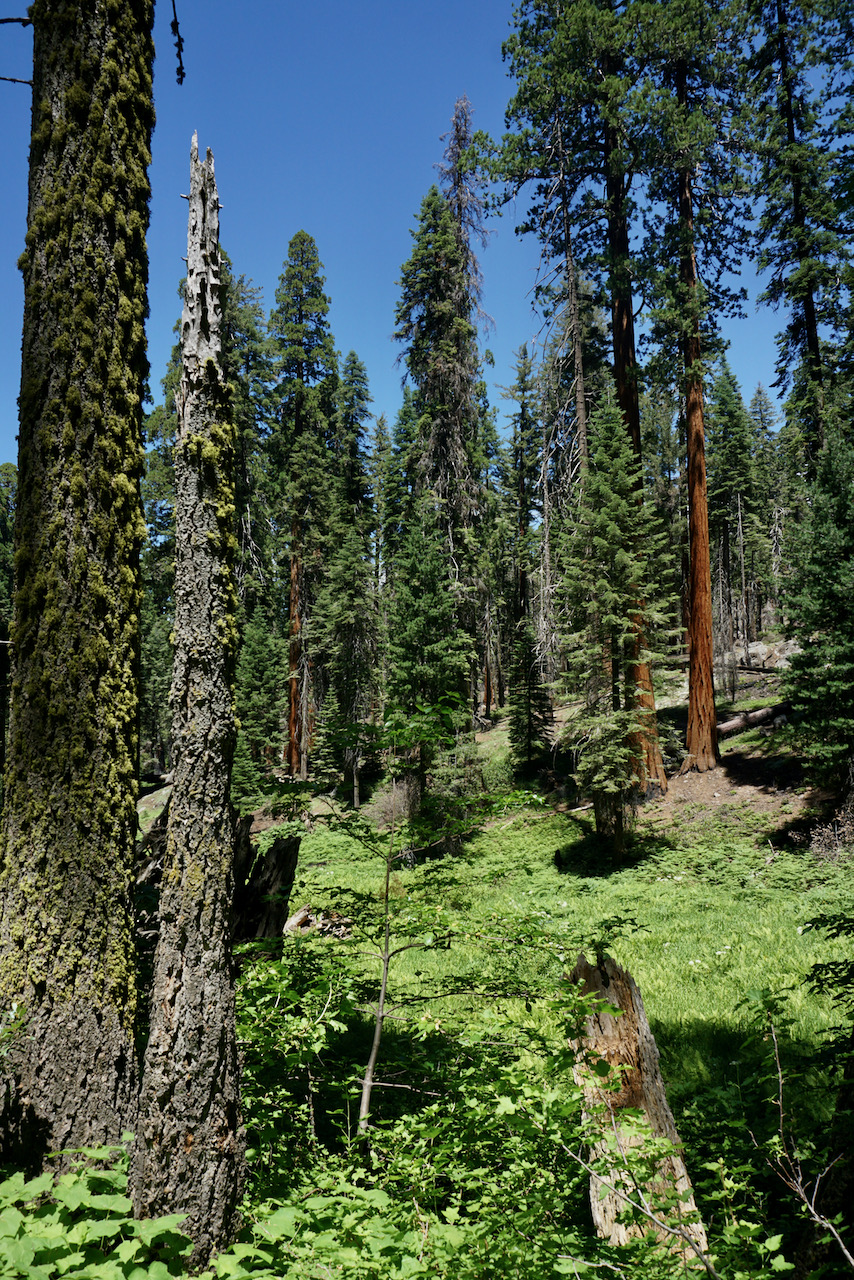



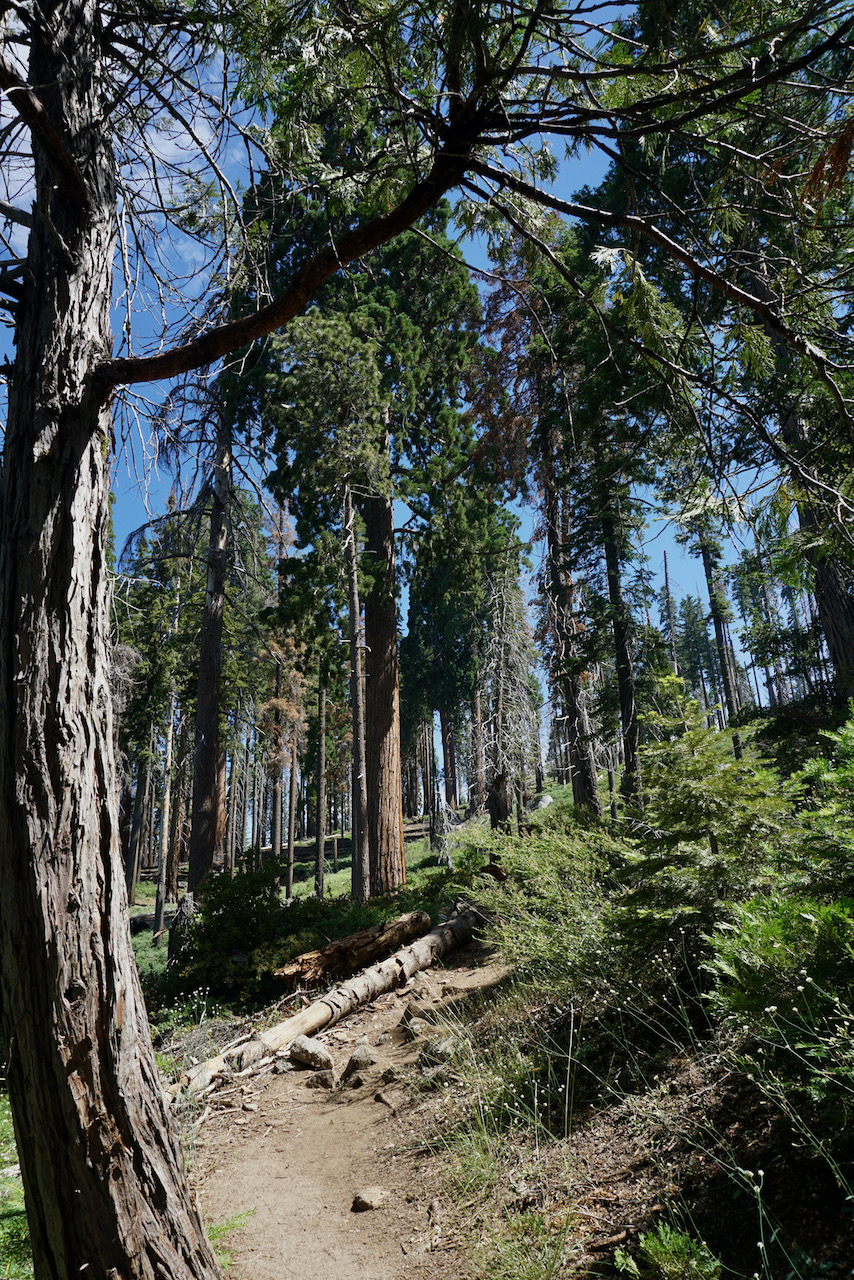
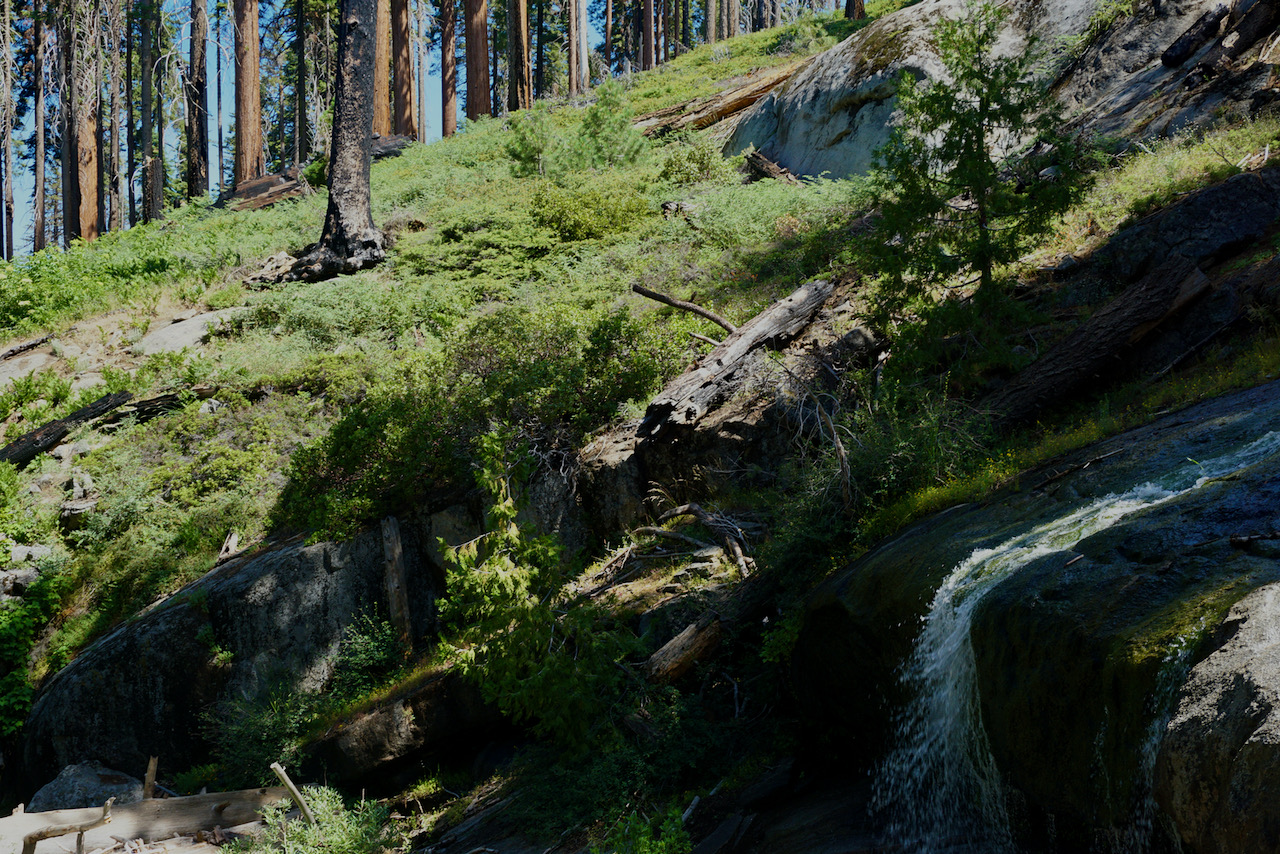



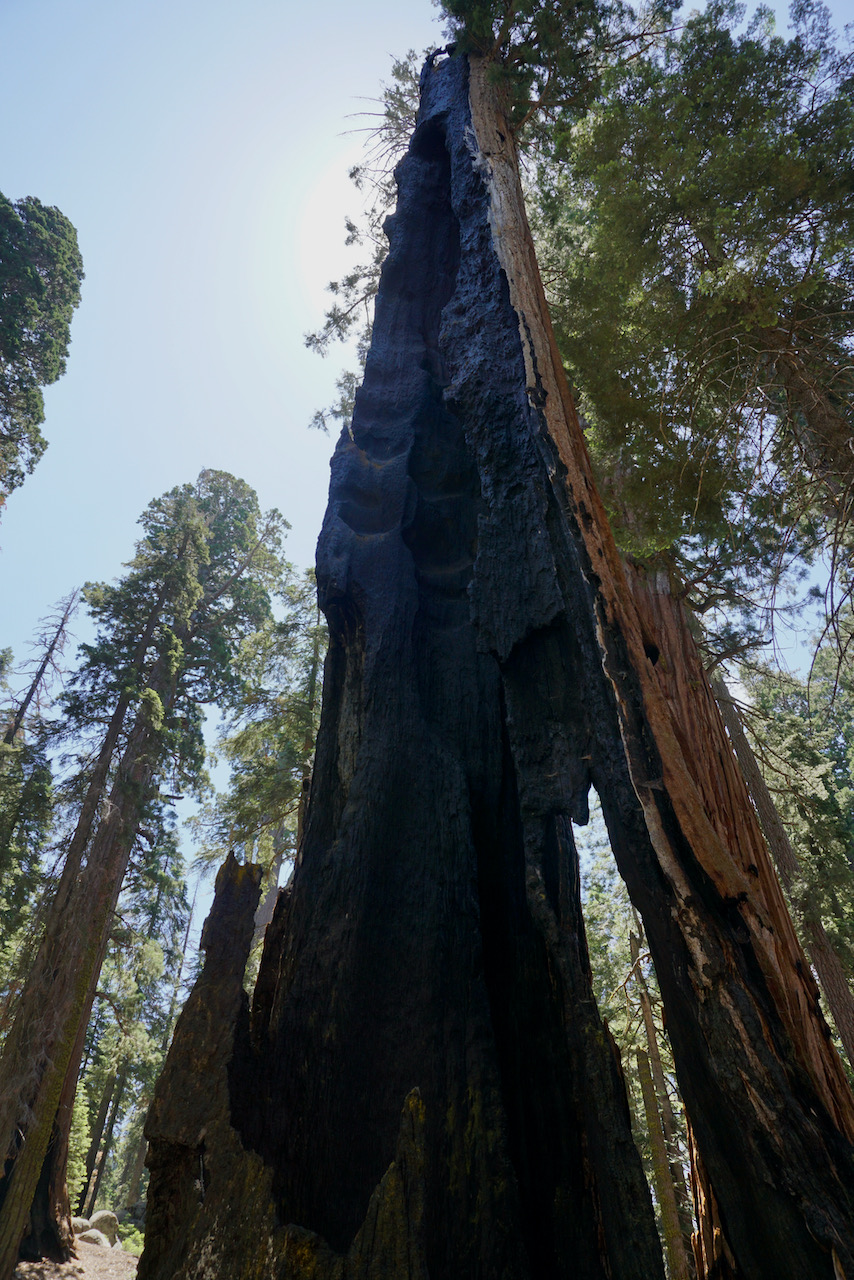

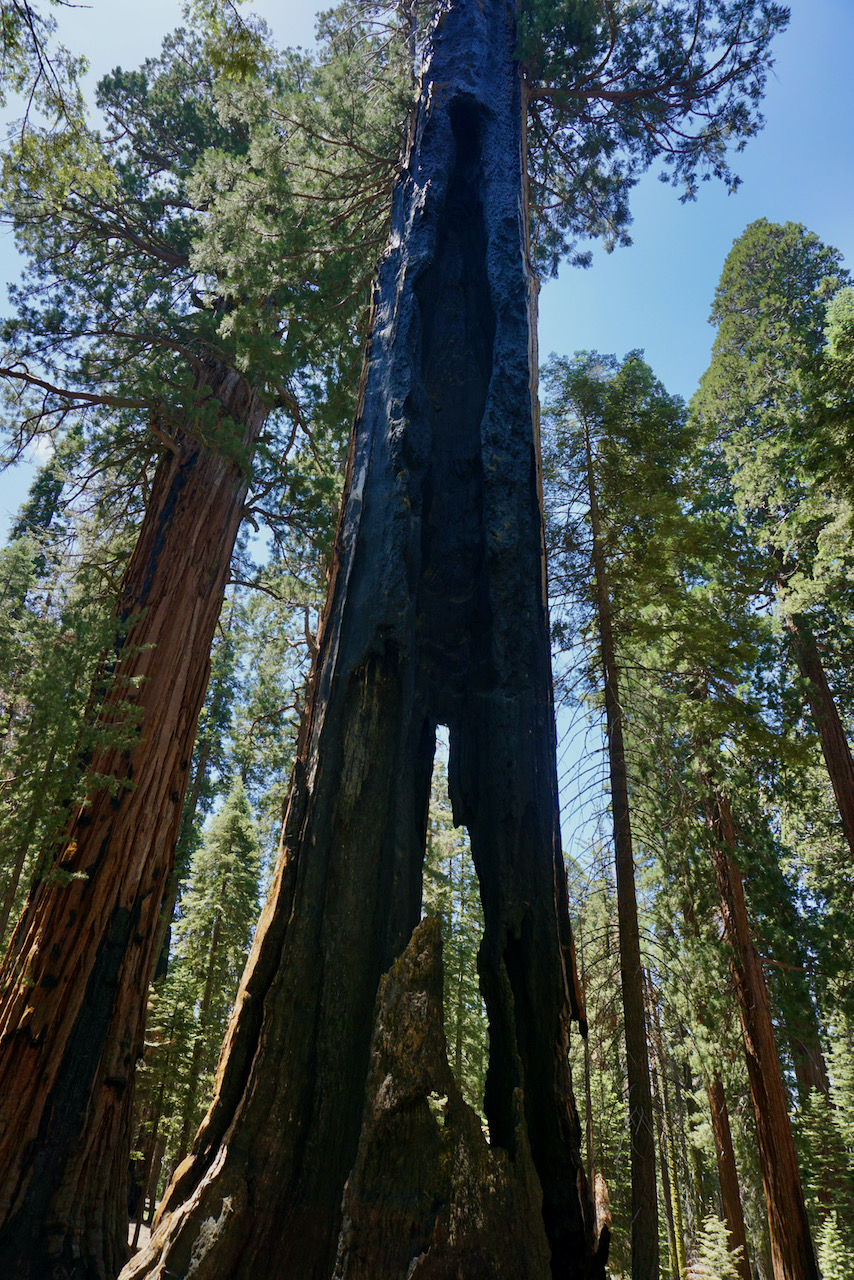






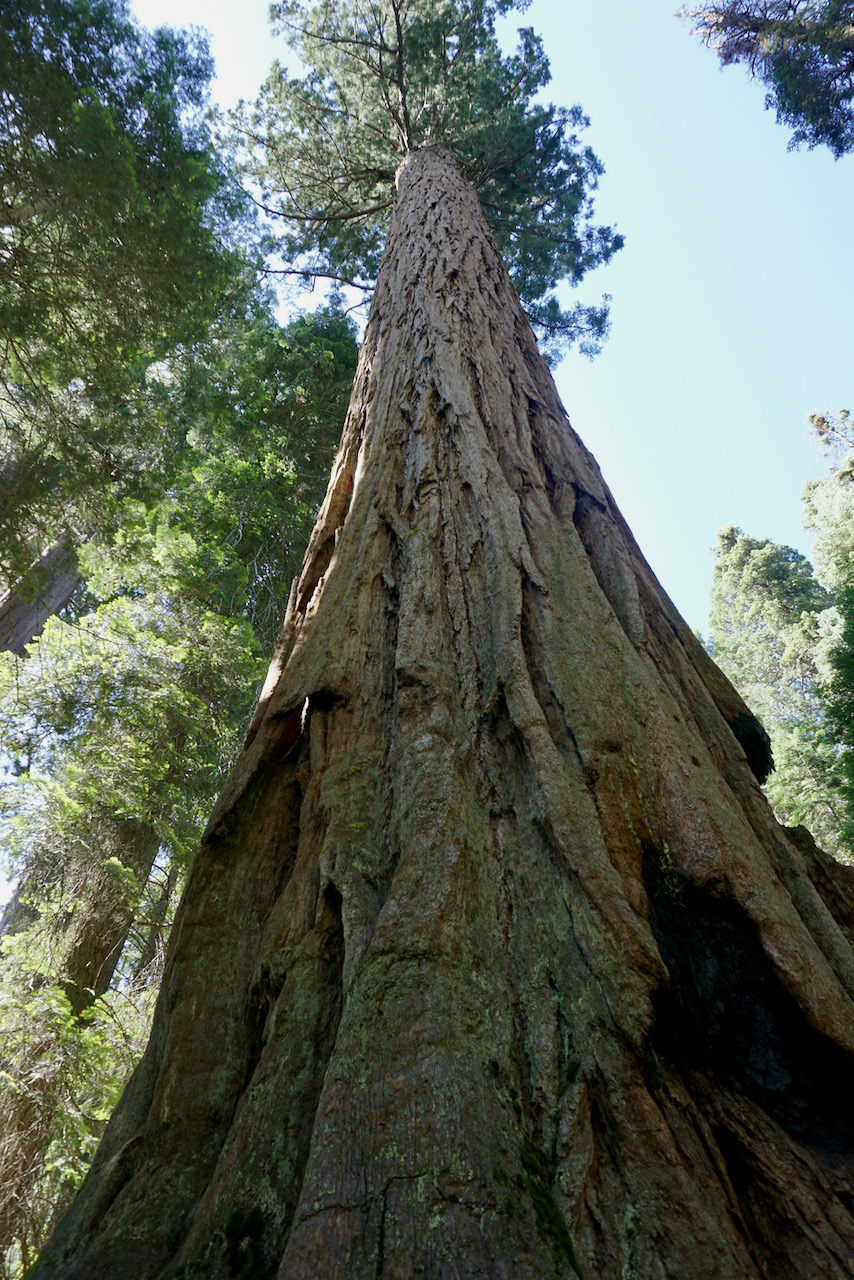






















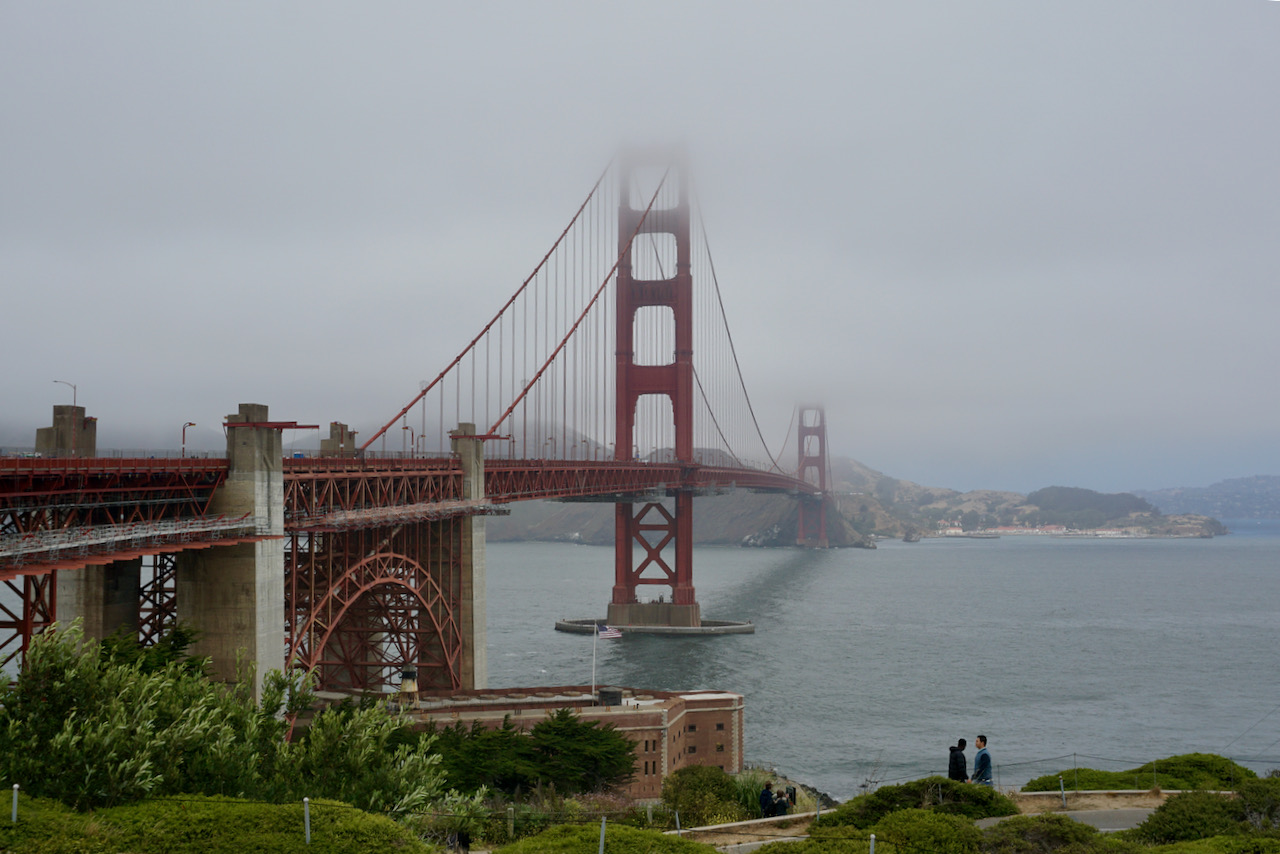
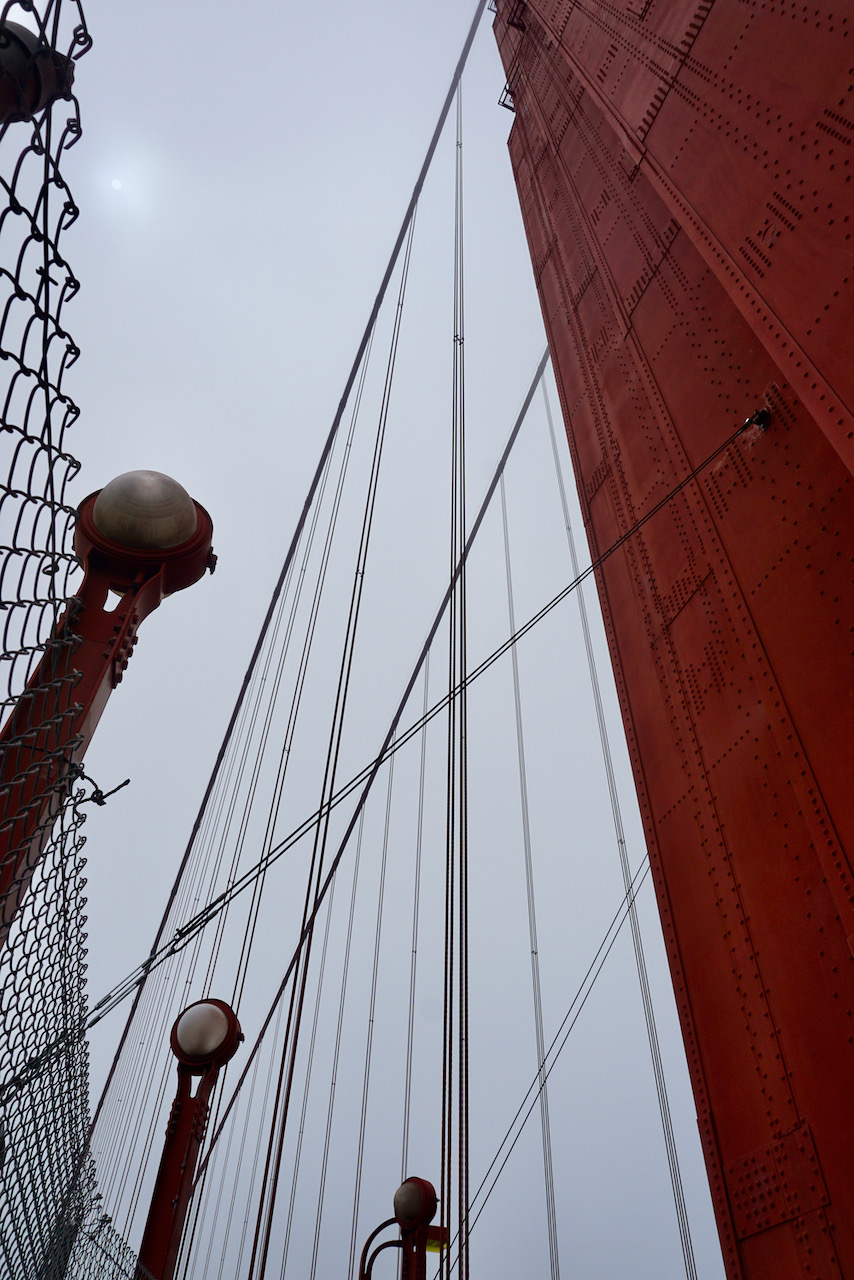
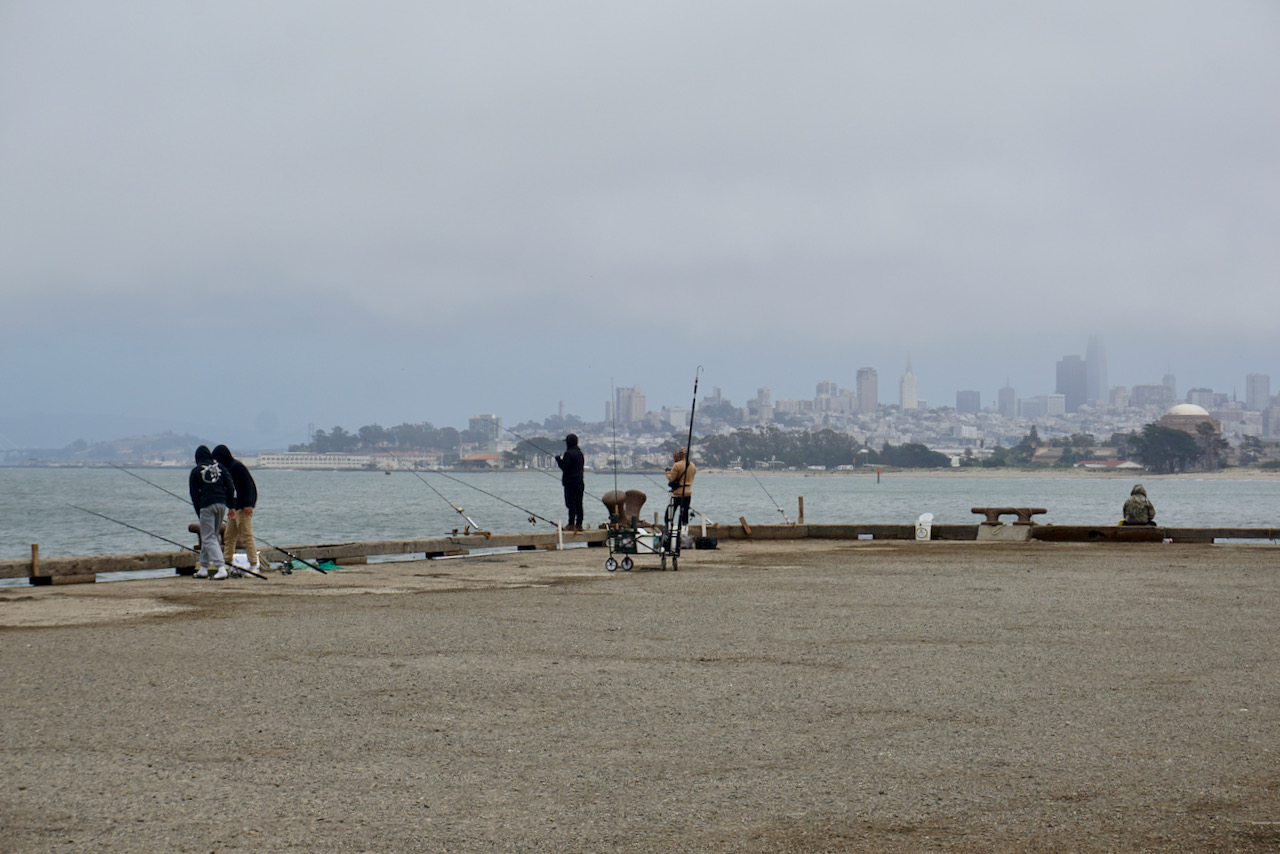

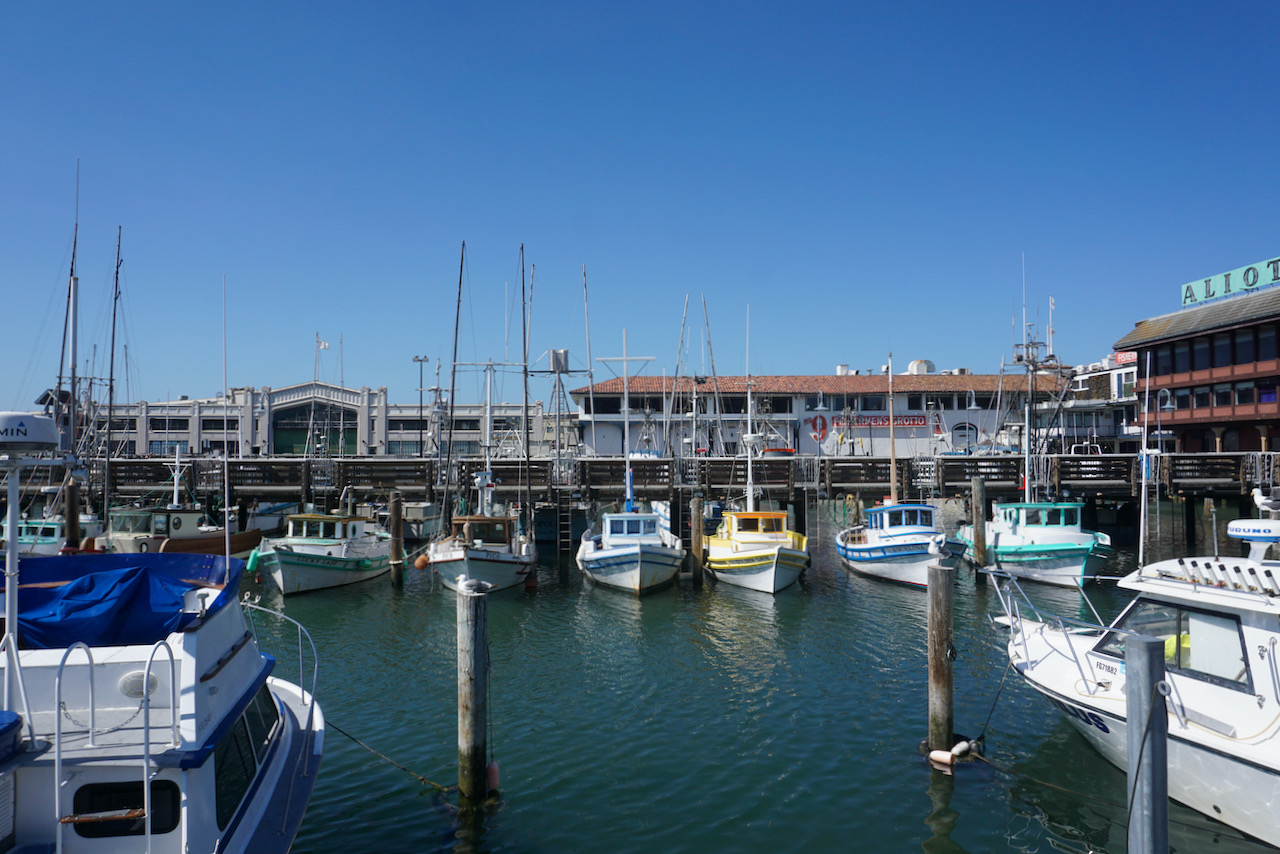



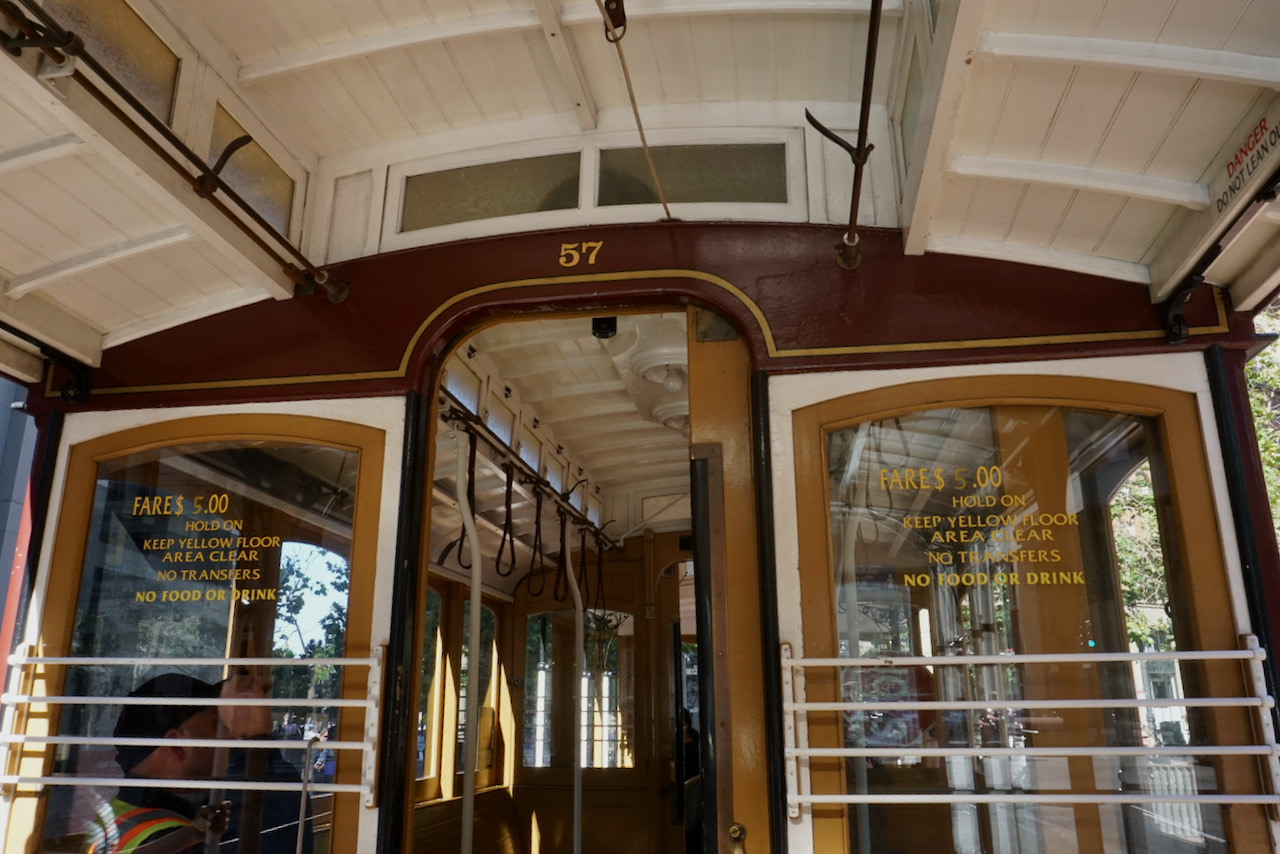

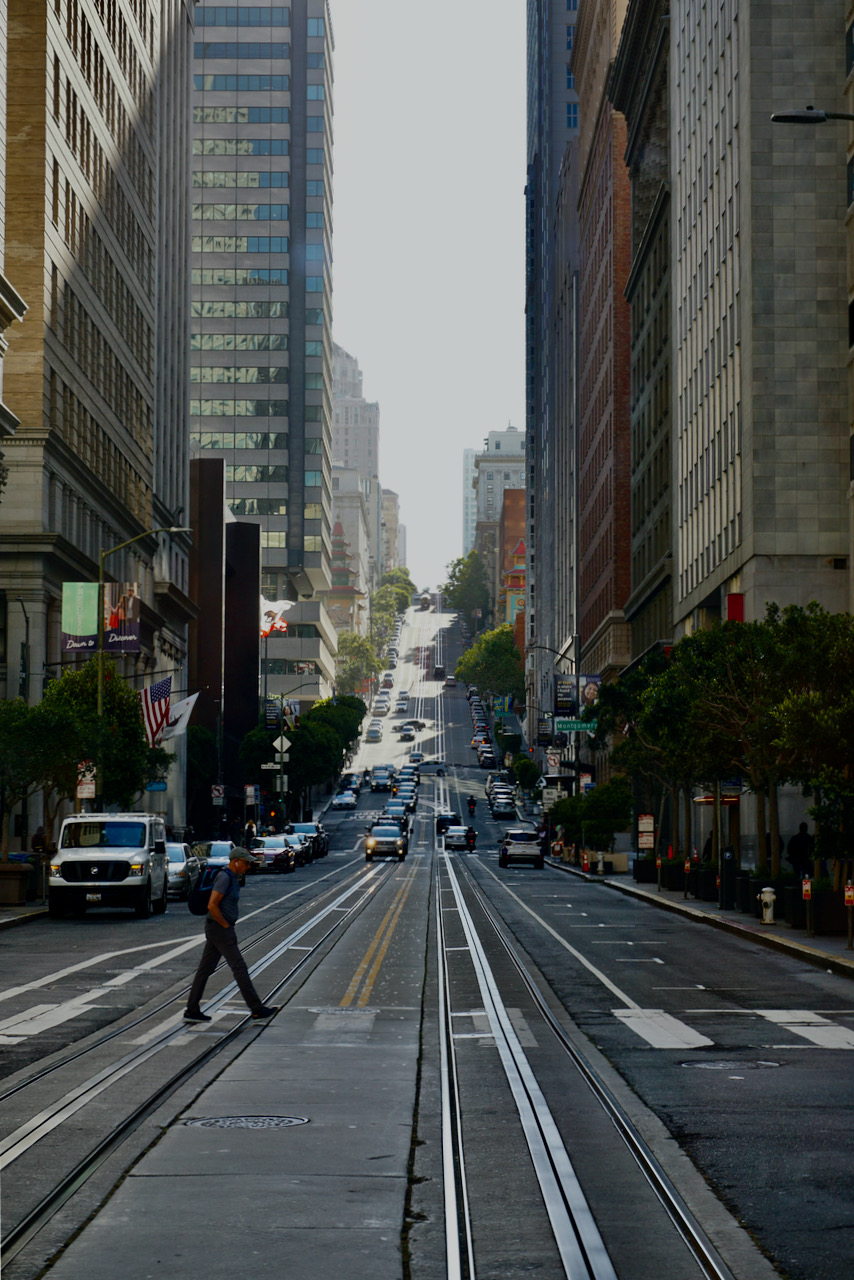

Once again, Rebecca, just lovely! Your photos are spectacular and the blog was well done. You have done a great job on this area.
LikeLike
Thank you! I’m very glad you enjoyed!
LikeLike